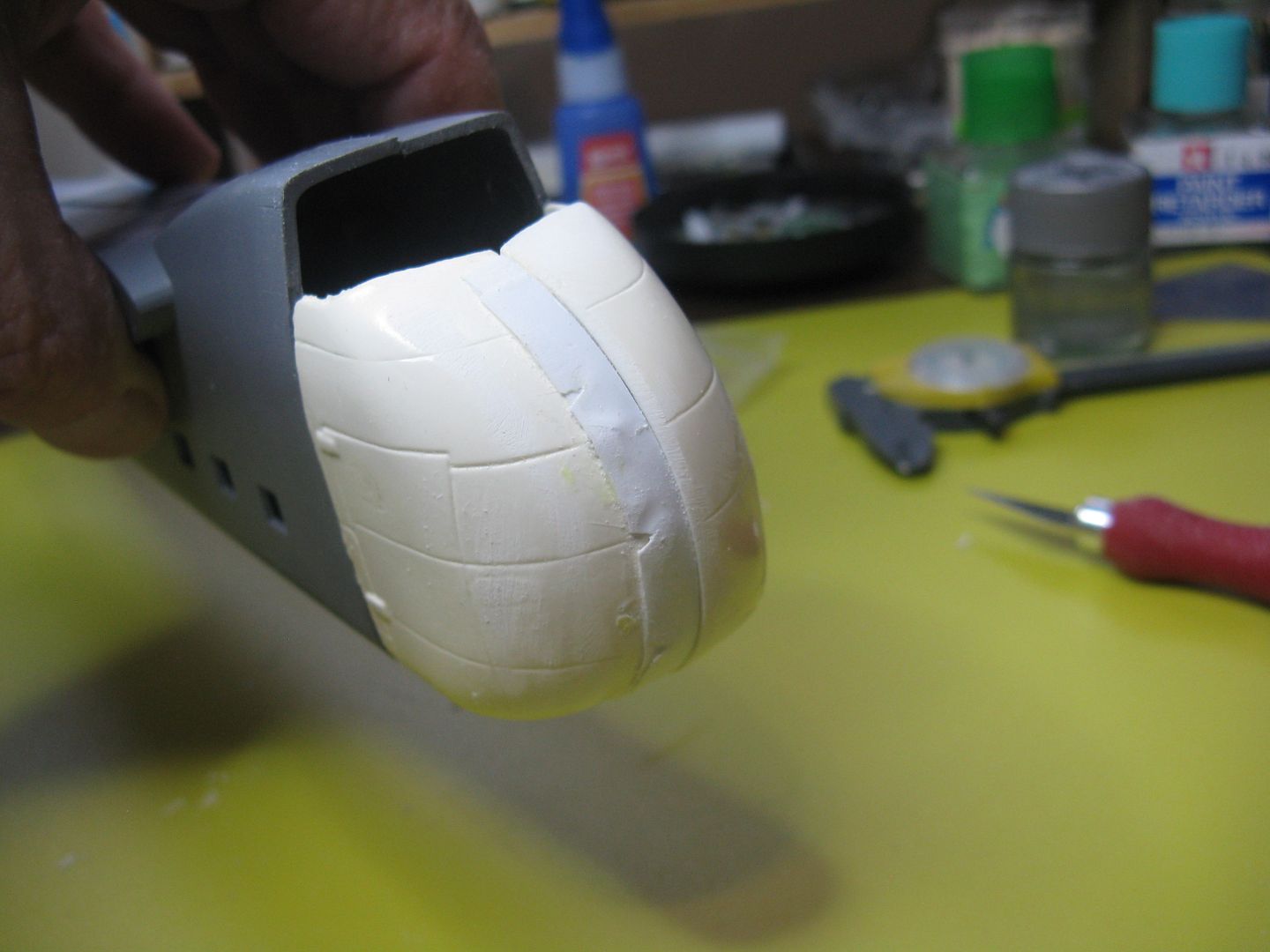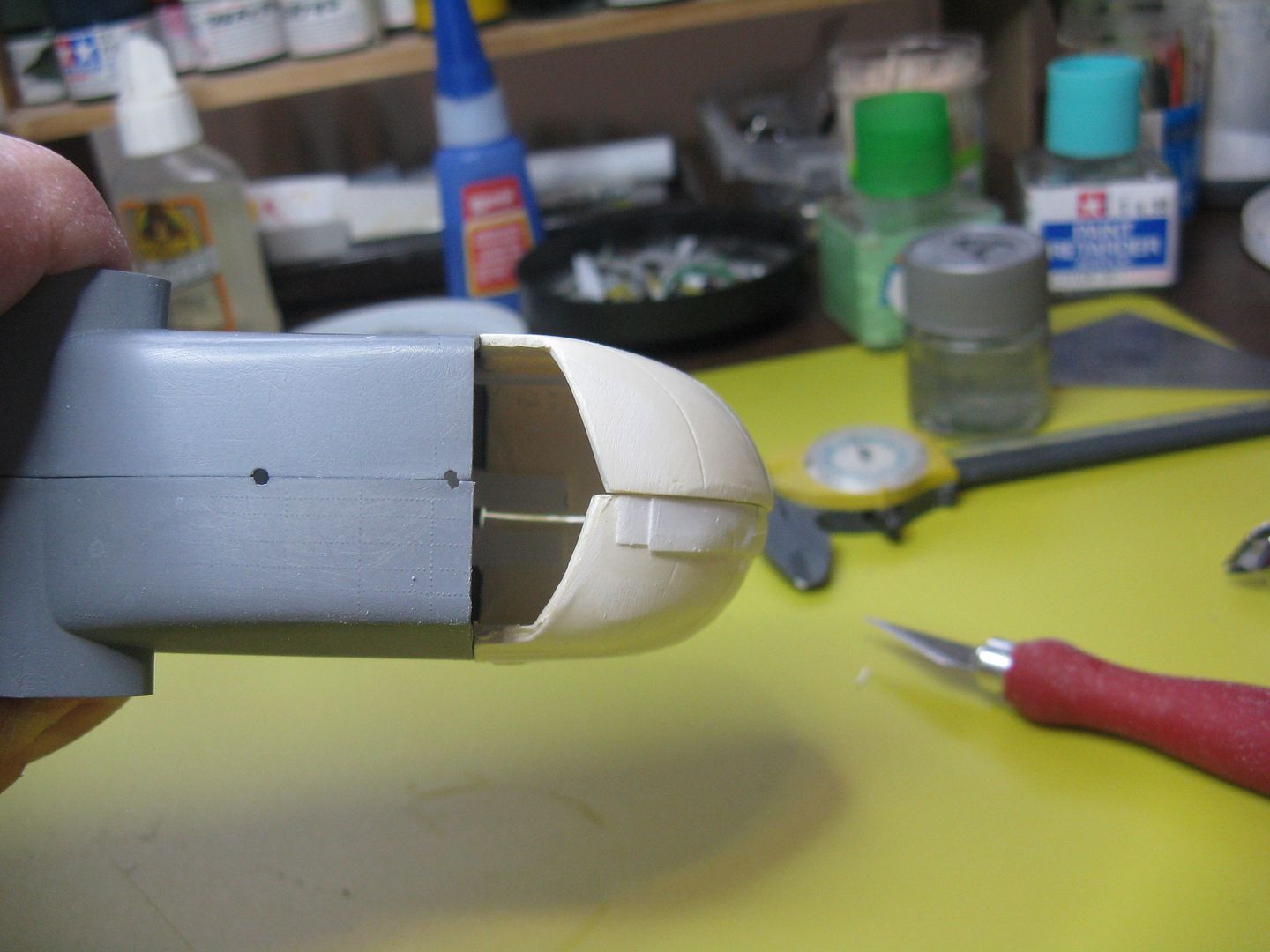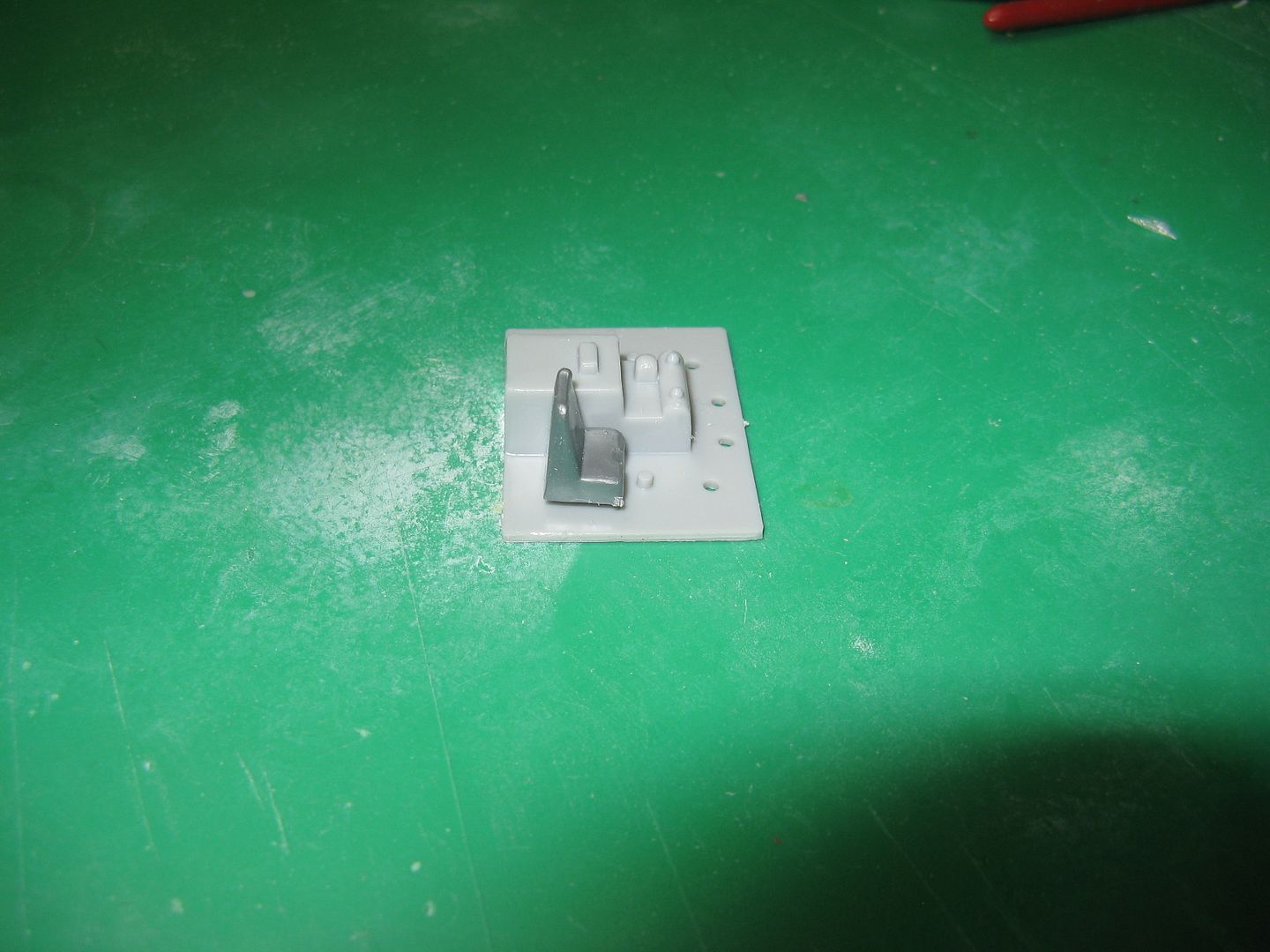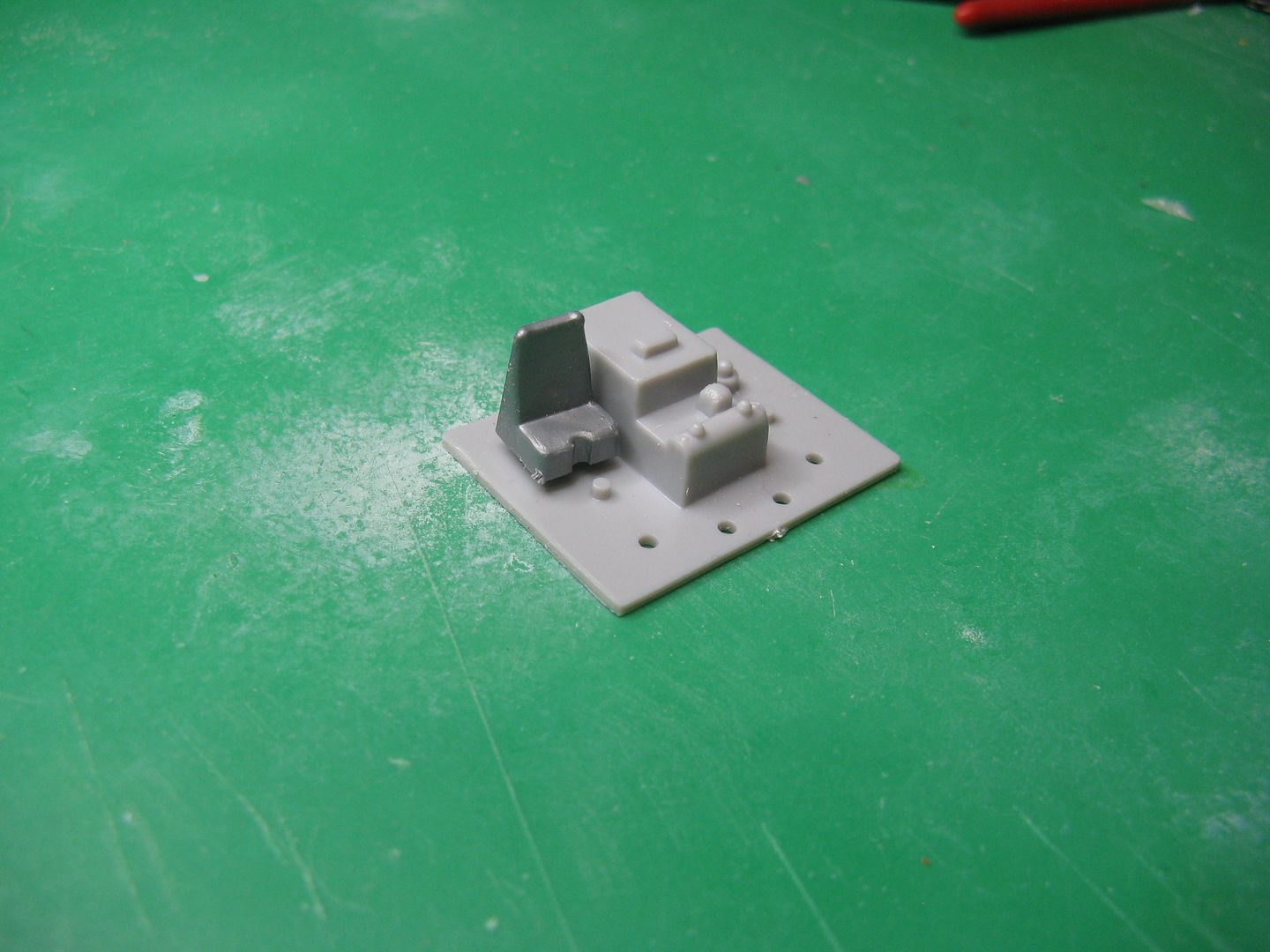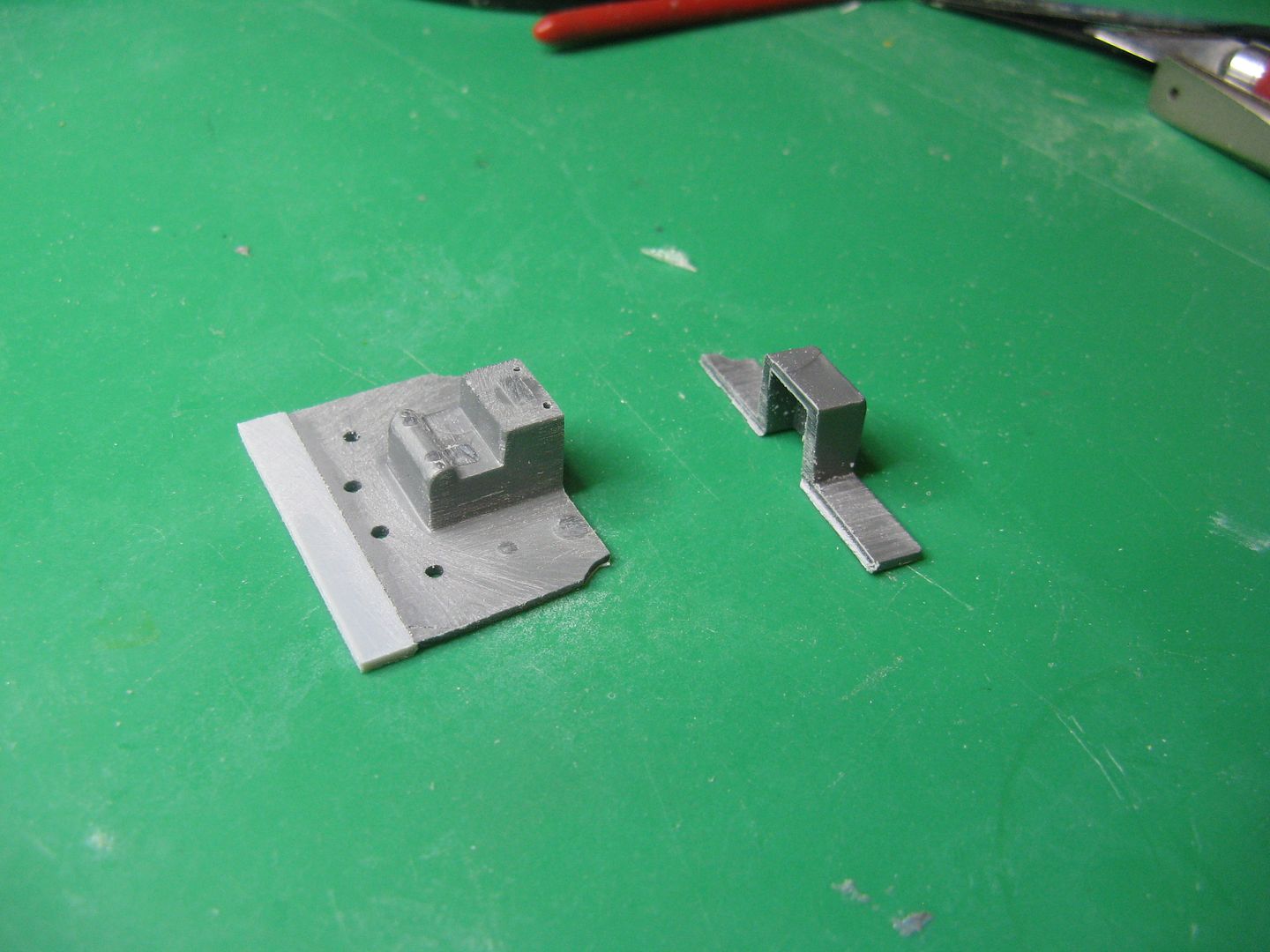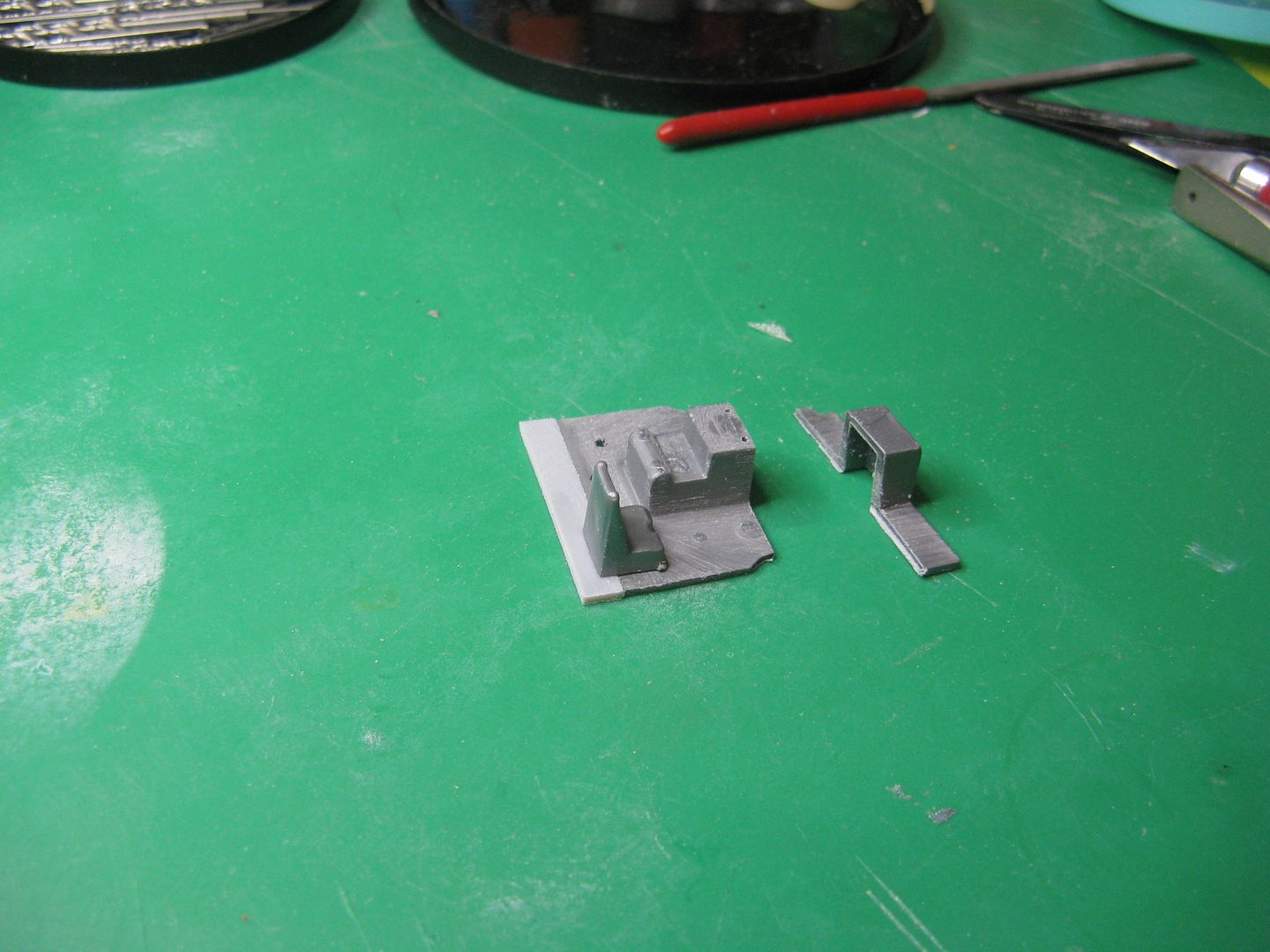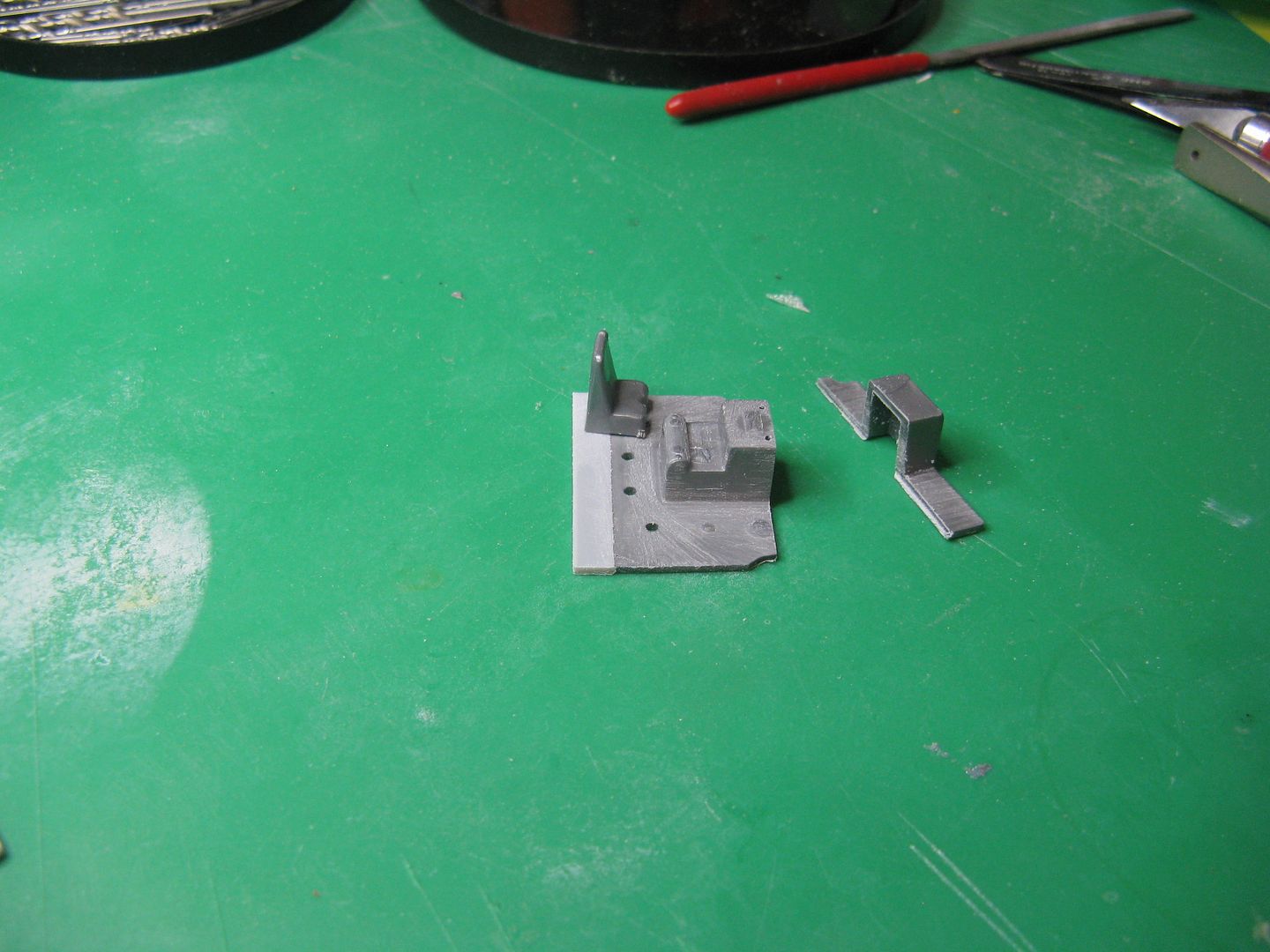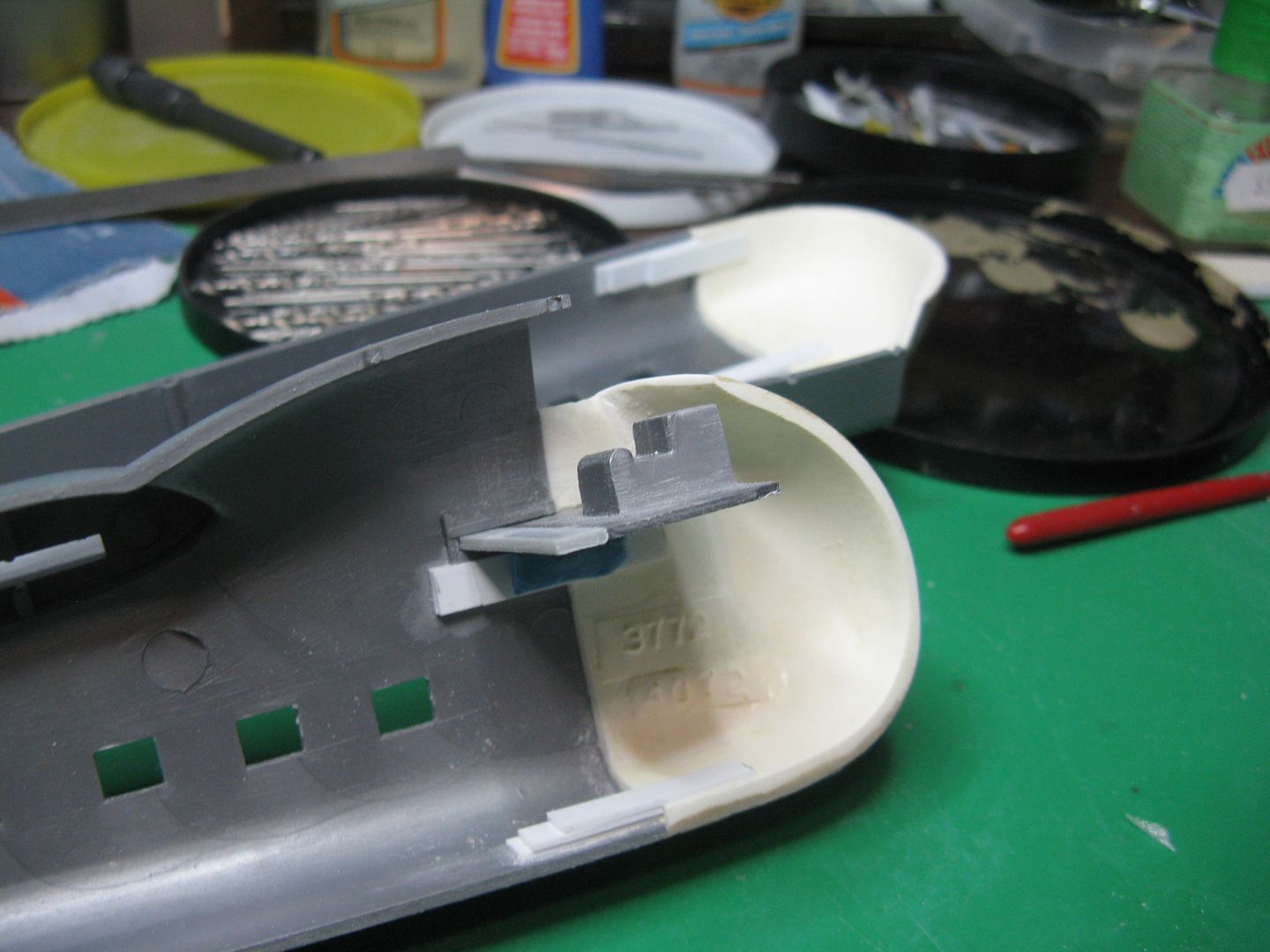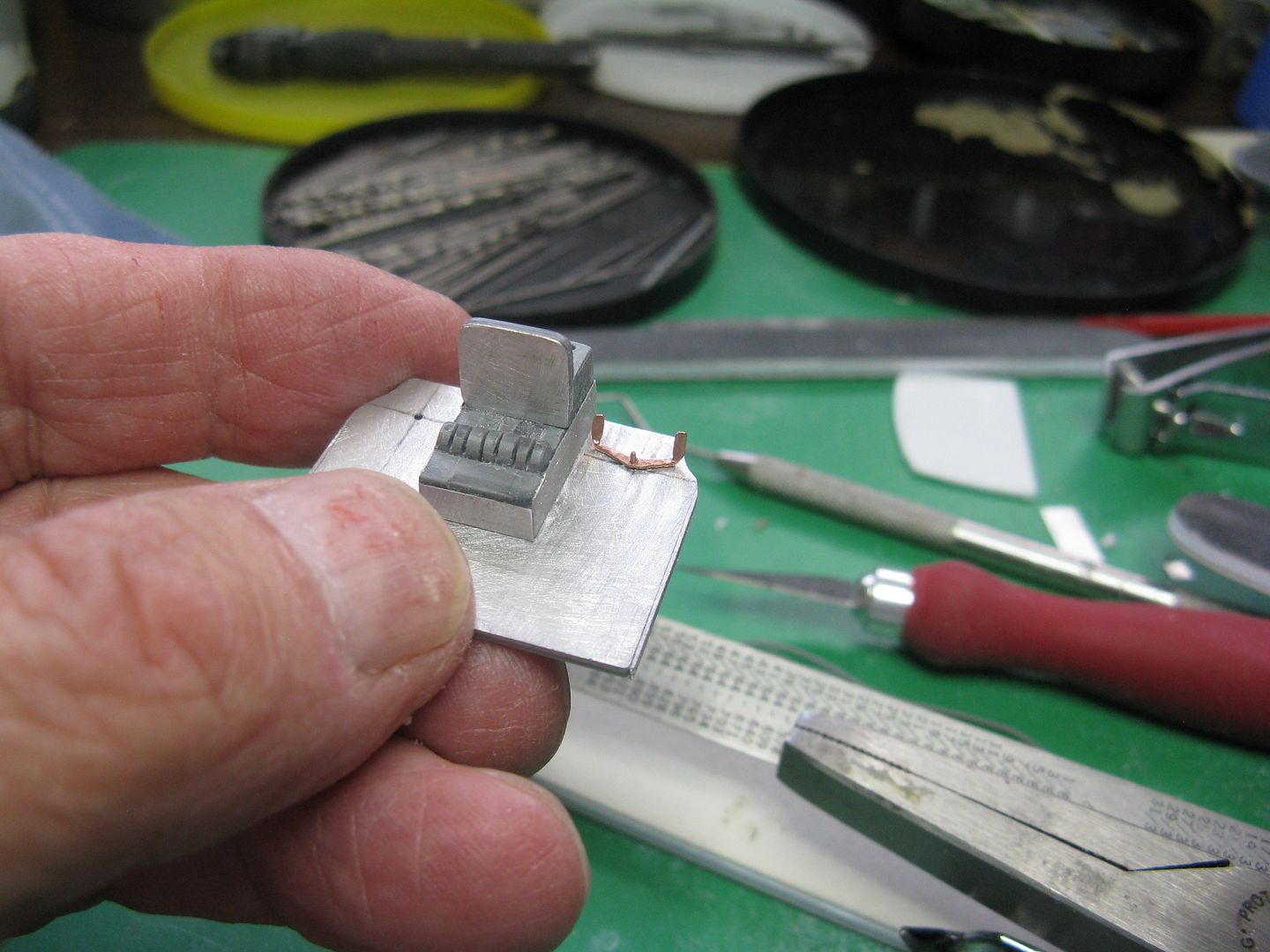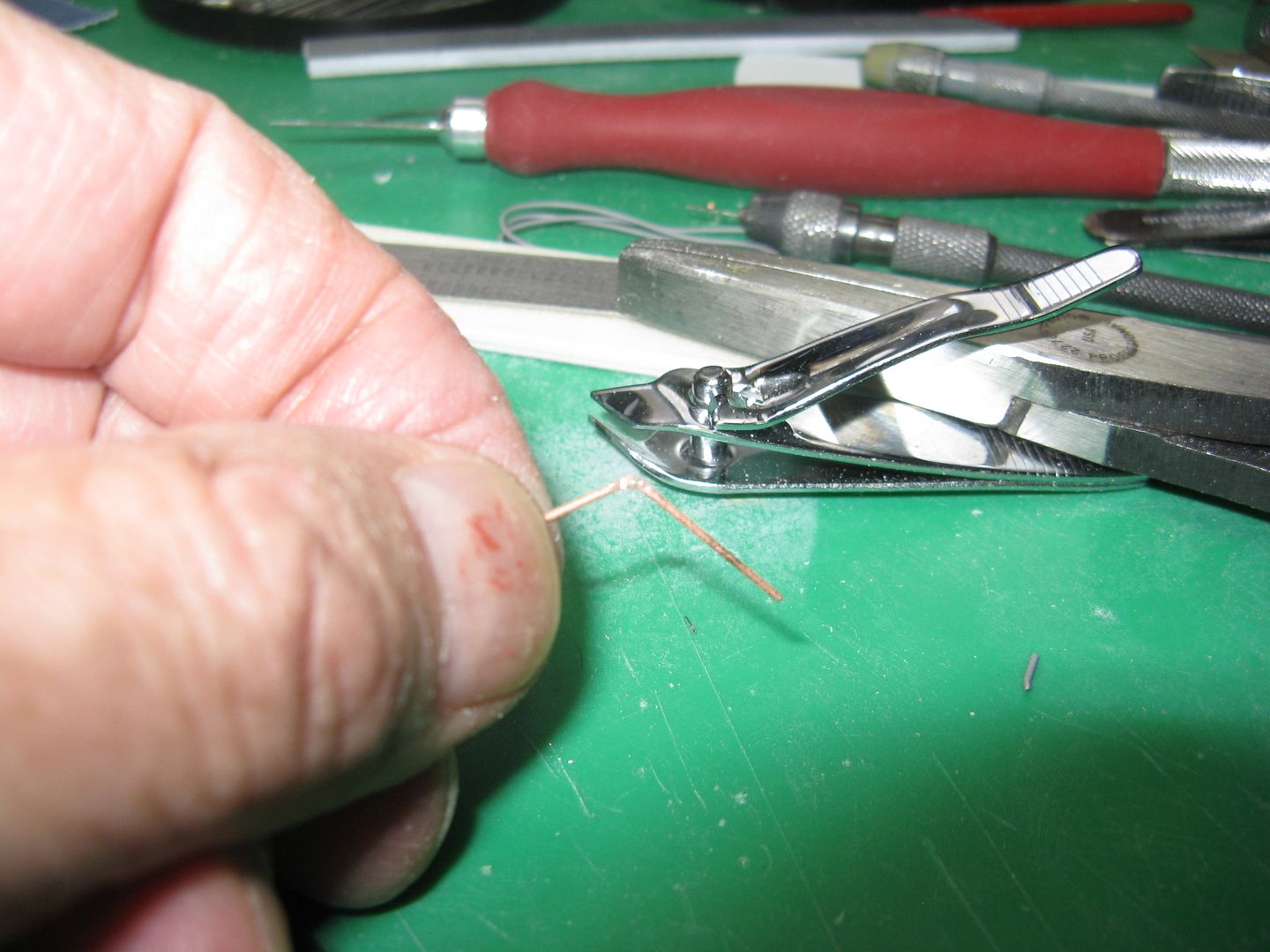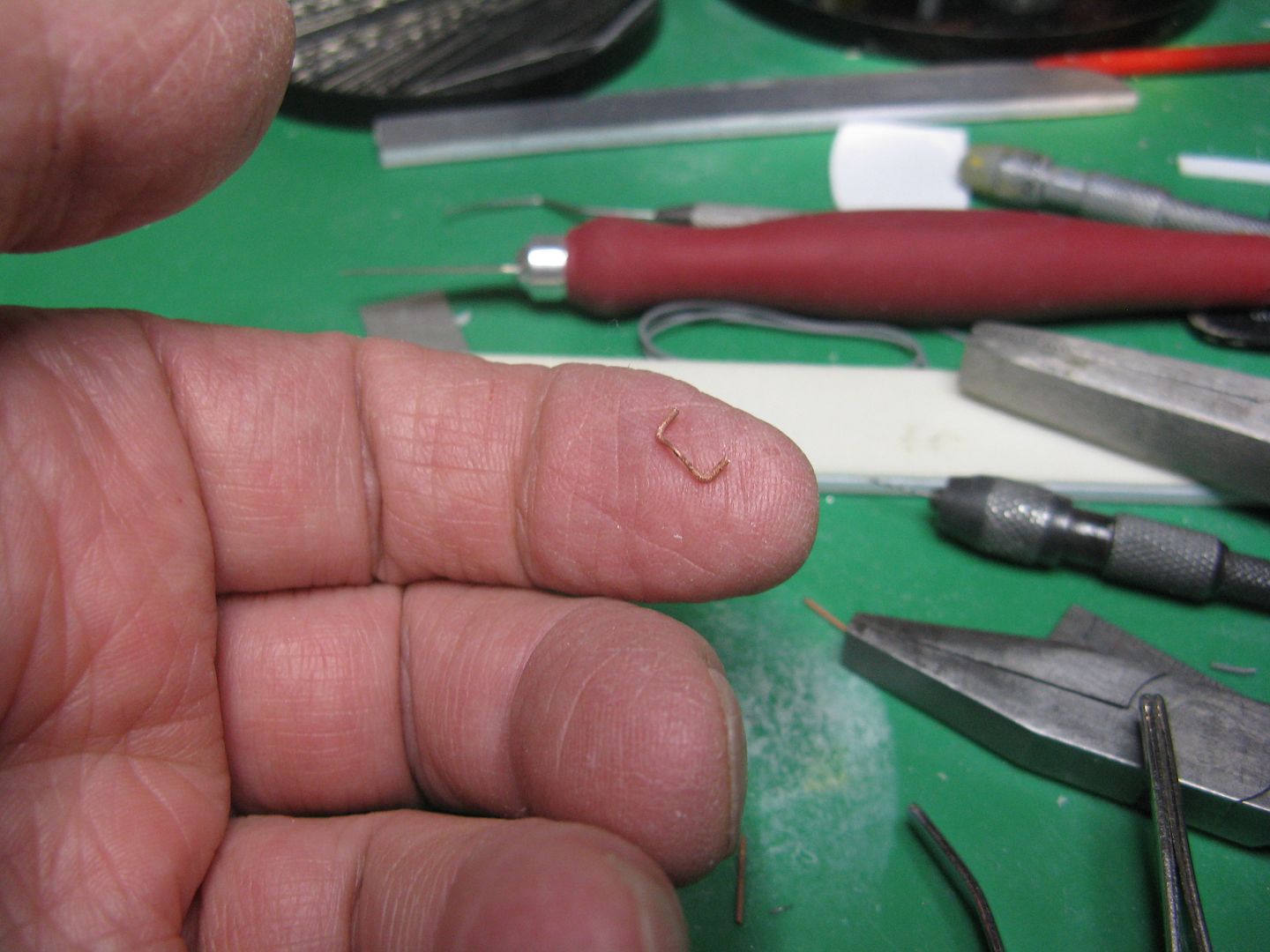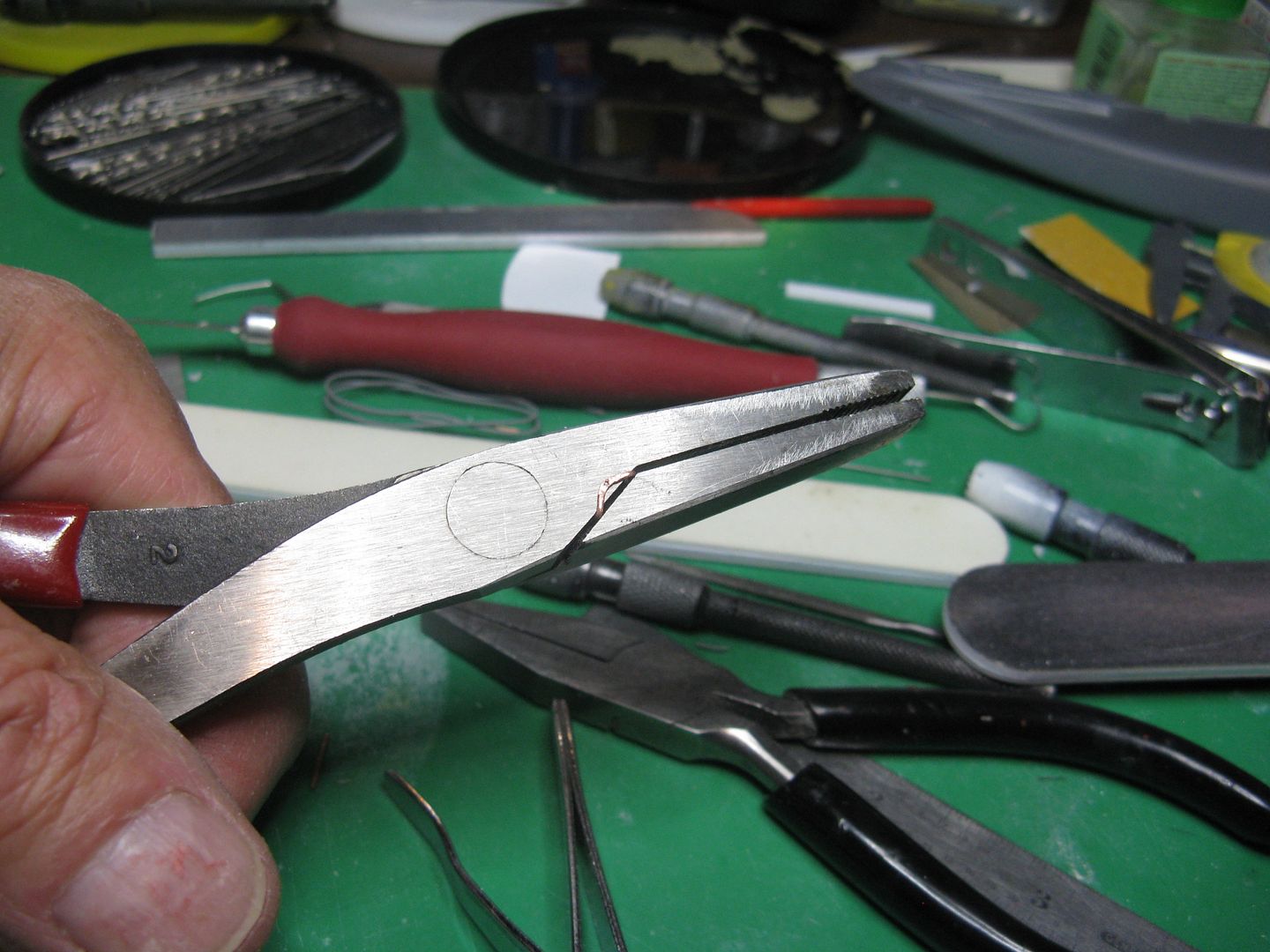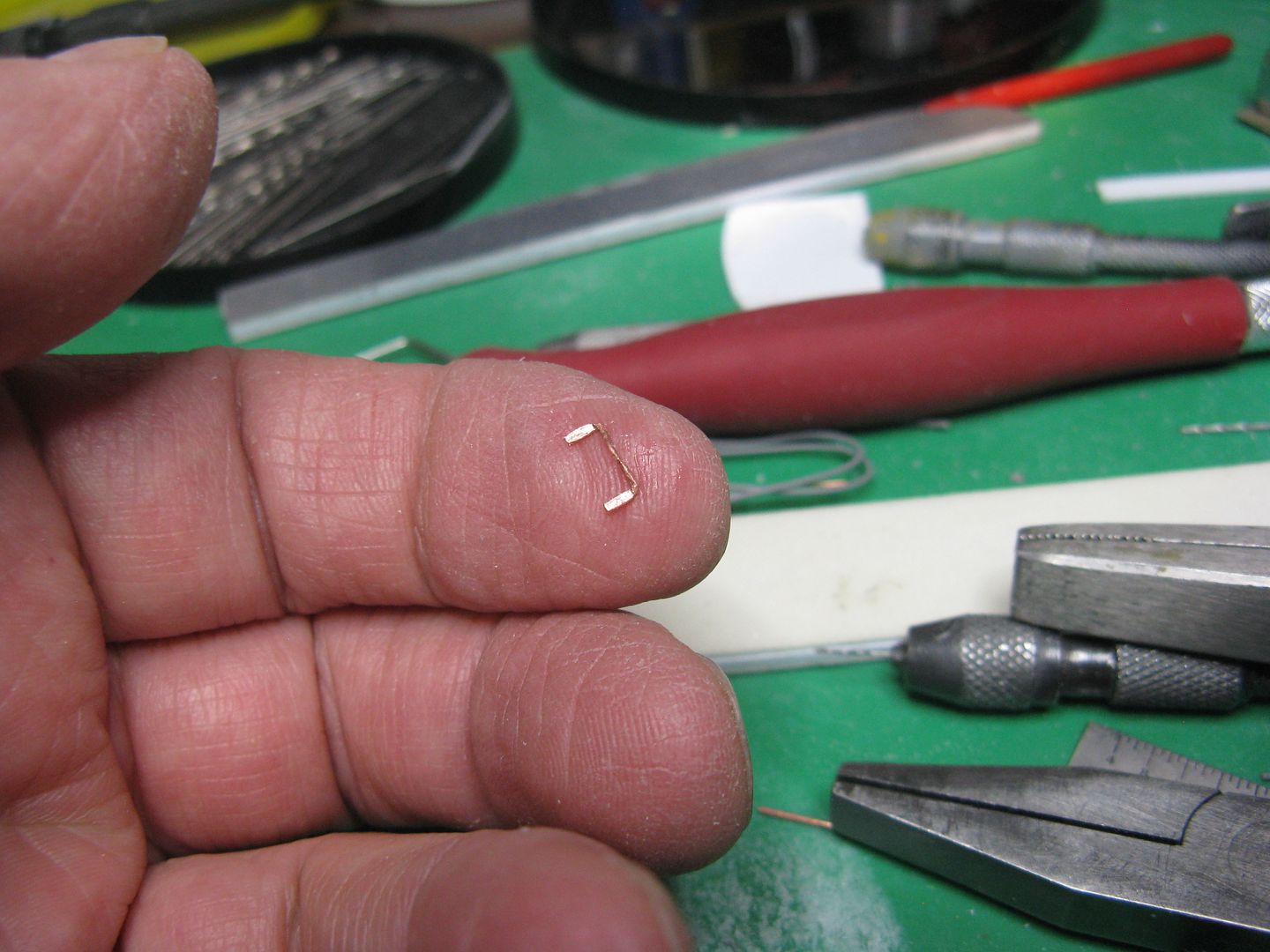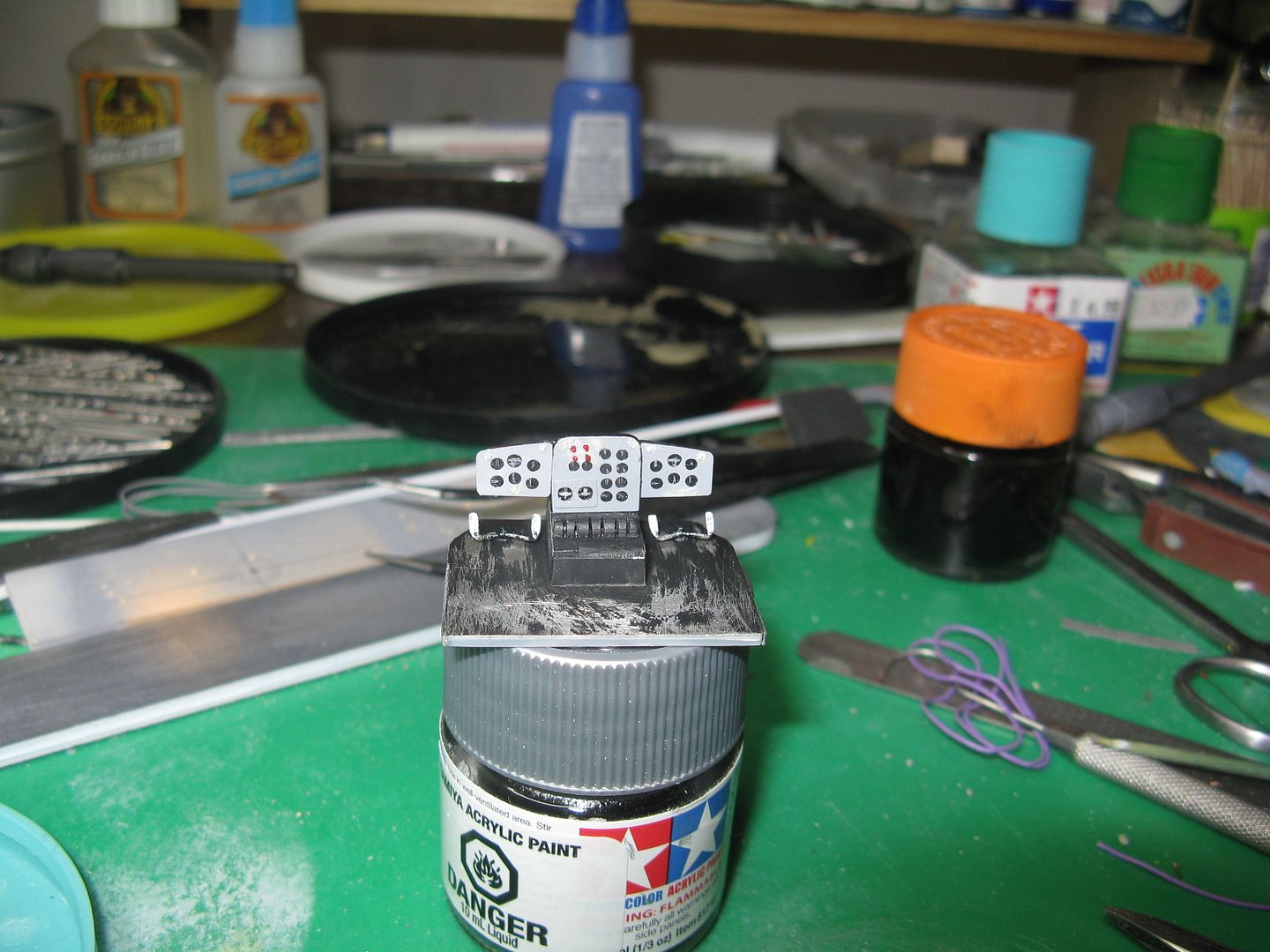I usually do not have two builds going at once, but the Rodent is on hold for a week or so while the weather warms up enough to paint in my shed, soooo...
A few months ago I had a call from the Yukon Air force. It seems they were missing a Bristol Frightener from the collection. Bob informed me that he remembered having one in the stash, or thought he did. Since we both suffer from CRS disease, I also seemed to remember the kit was the Airfix 1:72 model of the Bristol 170 Mk32 Superfreighter, but that back in the mists of time someone had made a resin conversion kit that converted the Mk32 to either a Mk11, Mk21 or Mk31 Freighter. Bob spent some time fudging about in the darkest recesses of his man cave and lo and behold! he found the kit along with the resin kit in the same box.
The Bristol 170 Freighter was based on the pre-WW2 Bristol Bombay design. It first flew in 1945. The airplane was a conventional - read ugly - fixed gear twin, built to accommodate a British military 3-ton truck driven onboard via a nose trapdoor. The trapdoor was quickly replaced by a set of clamshell doors, and the aircraft began to enjoy modest success as a commercial offering. SABENA, Silver City, and Air France flew them, as well as Northcoast, Norcanair and Wardair in Canada. The Canadian aircraft were all Mk31's, which meant they had squared off vertical tails and rounded tips on the horizontal stabs, as well as improved Bristol Hercules engines of 1700 hp.
Not one to leave well enough alone, one morning after a hefty evening of tea and crumpets - or, one suspects, beer and skittles - the design boffins at Bristol met over breakfast kippers to discuss improvements to the airplane. "I know" said one, "let's make it uglier." There were cries of "Hear! Hear!"
and thus was born the Mk32. The 32 has a taller, rounded vertical fin and a larger nose. Ok, I admit I made up that last part, but it could have happened.
The Airfix kit is ancient. It first came out in the late 1950's I believe. Here's what it looks like:
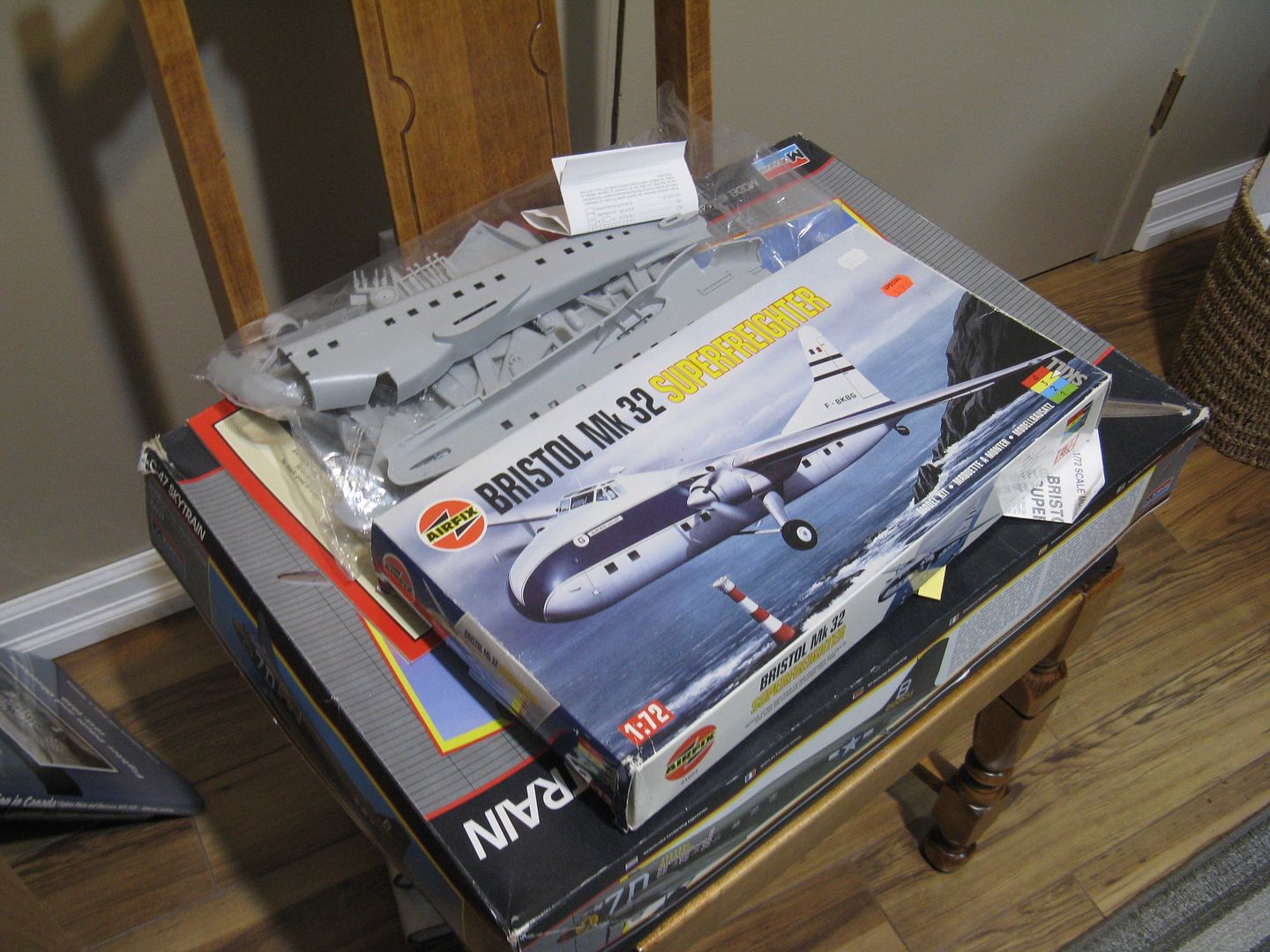
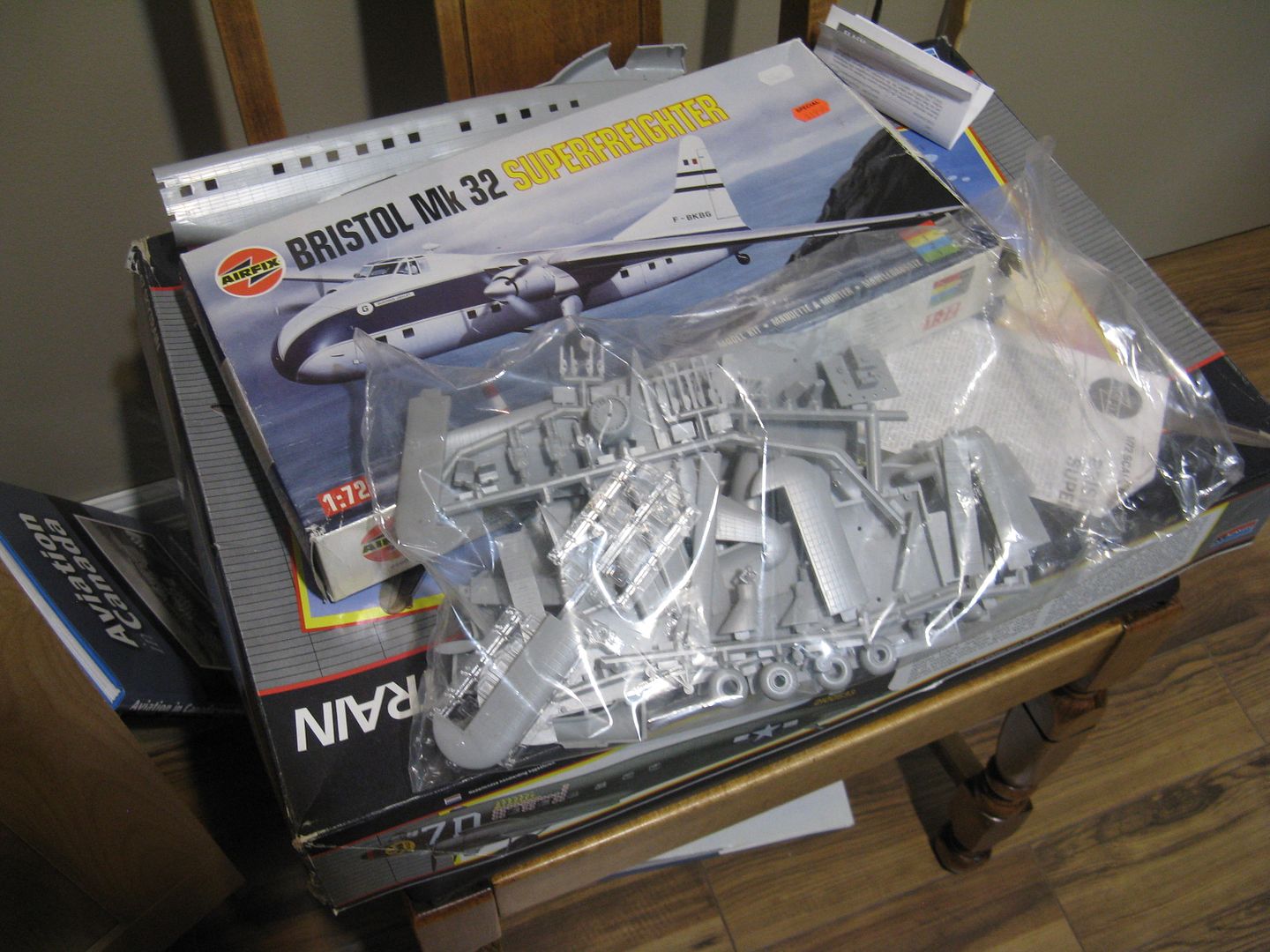
The model for the YAF will be this one, CF-UME in Northcoast titles, seen here in all her glory.
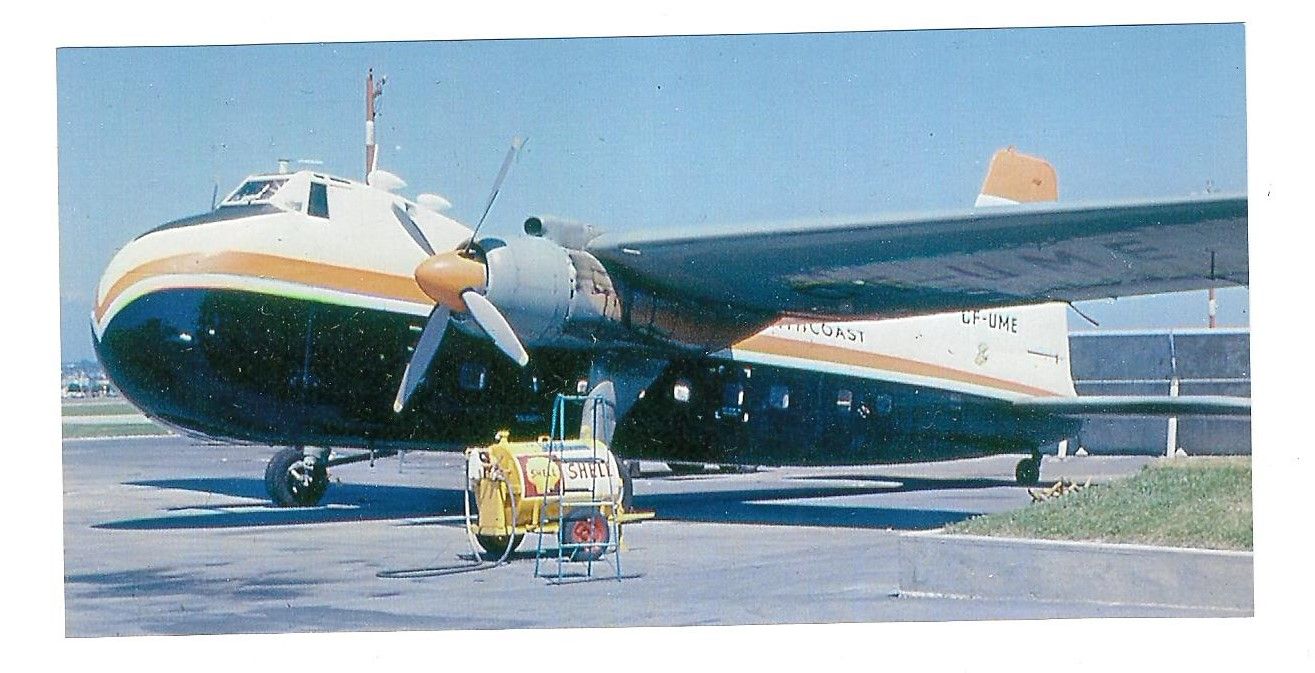
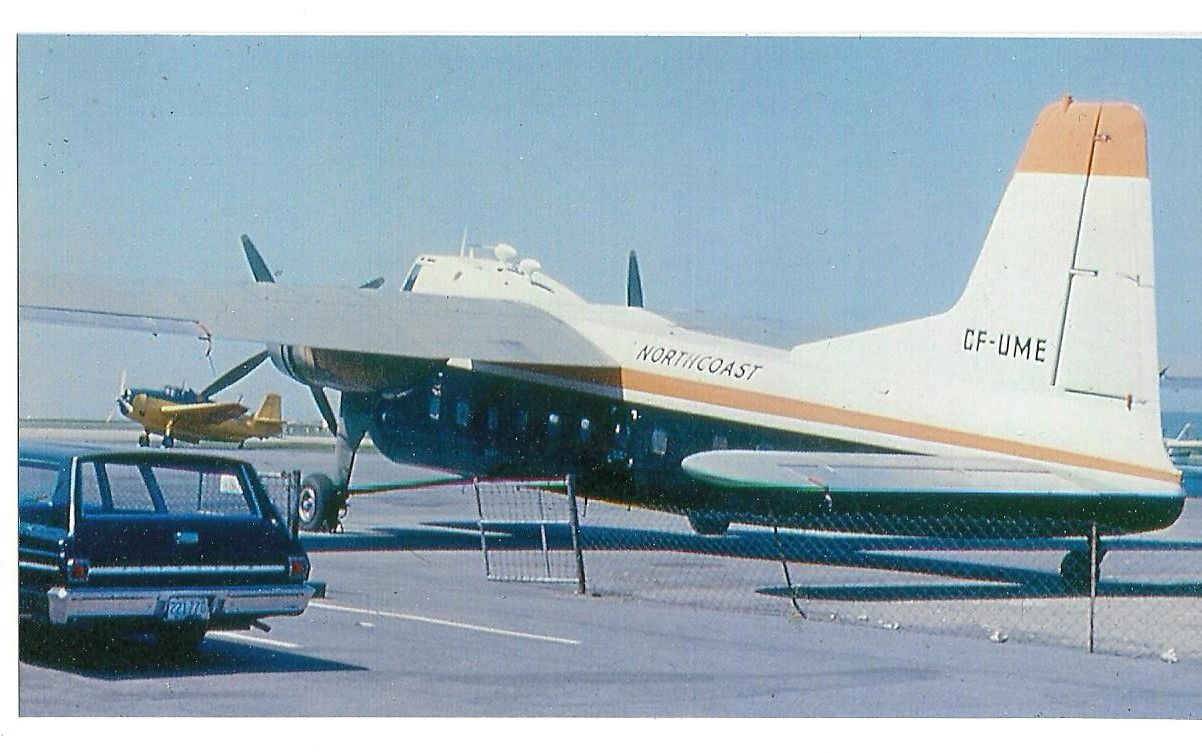
And finally seen here after she went through the ice on a lake north of Whitehorse one spring, better than 40 years ago. An attempt was made to salvage the aircraft, but she sank before they could save her and she sits on the bottom still.
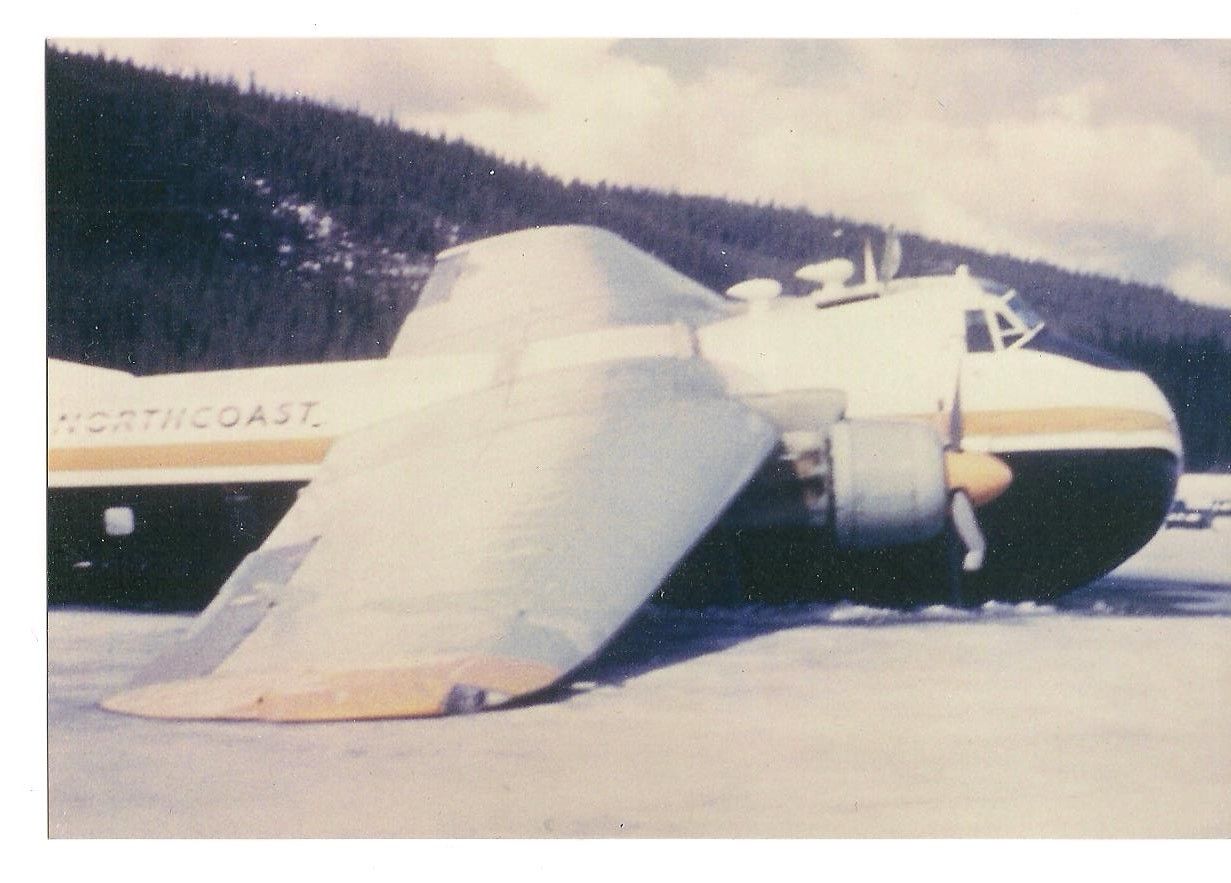
For the mod I shall use this part of the resin kit.
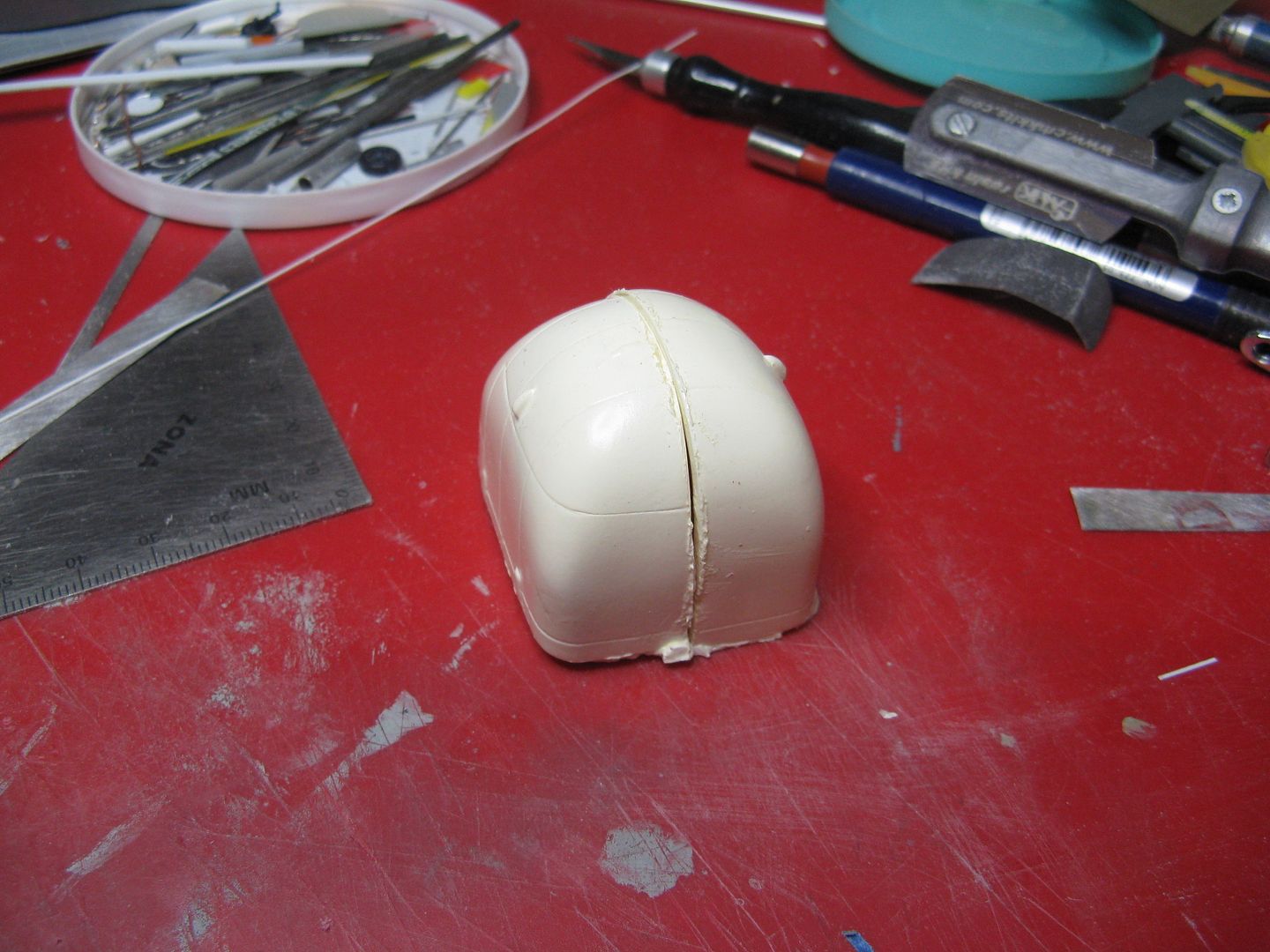

It looks like a modicum of firkytoodling is in order, so let the cutting begin to commence!
I shall use the kit vertical and horizontal tail surfaces, since the horizontal stab tips on the Mk31 are rounded. The vertical tail is straight across rather than rounded...
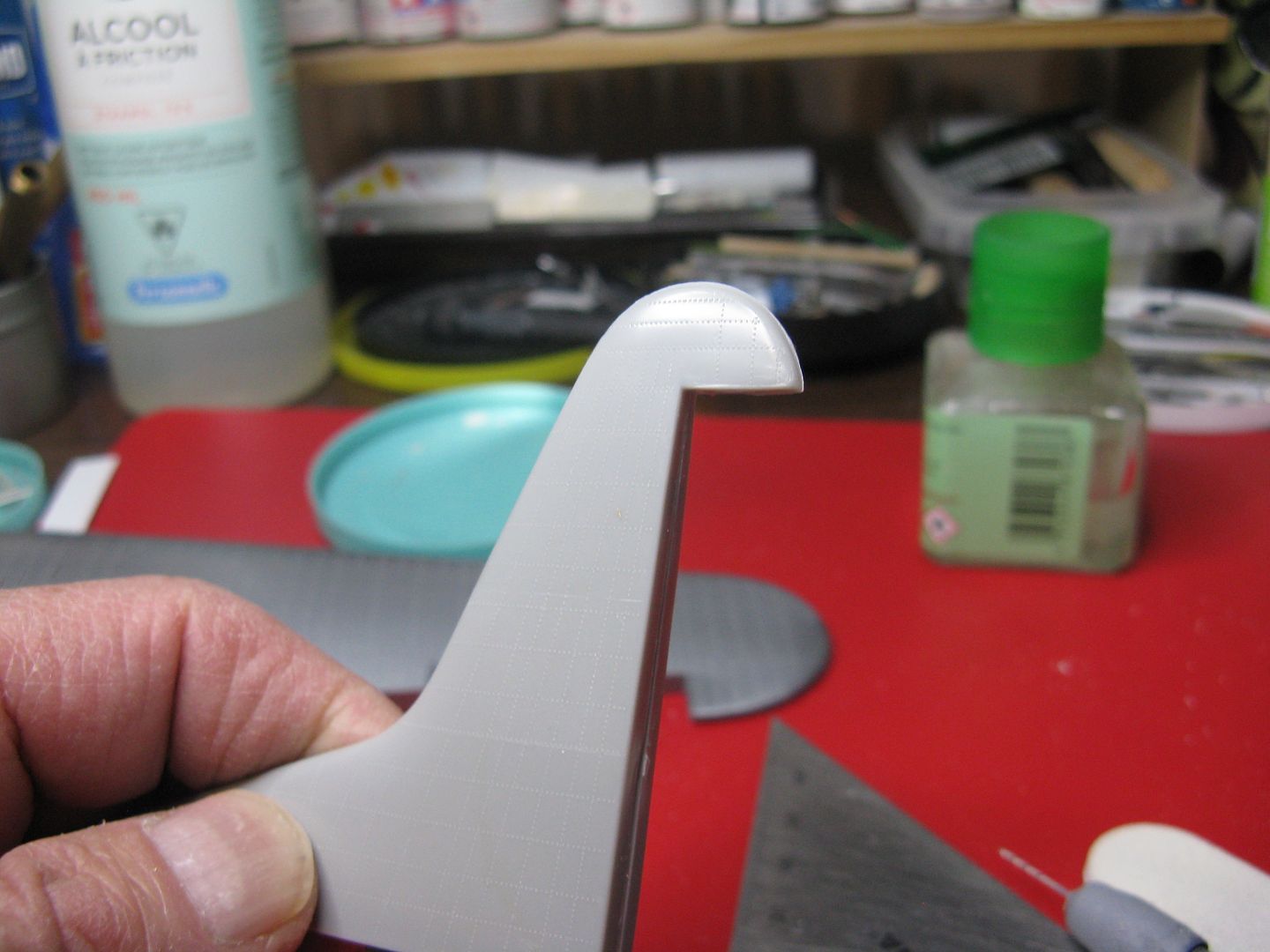
...So I began by cutting off the fin at the top of the rudder. and installed a top plate using a scrap of plastic.
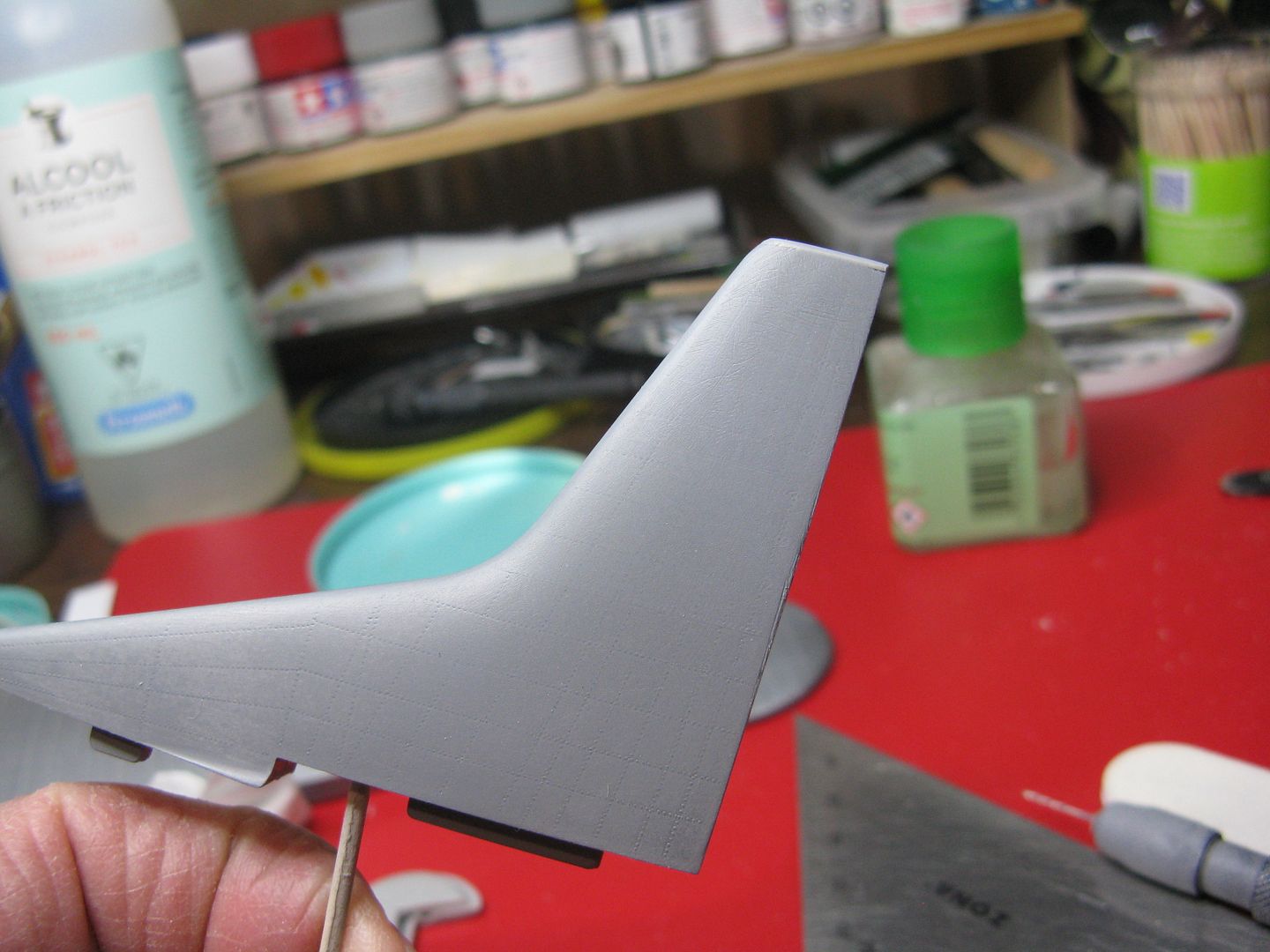
The trailing edges of the flight controls are approximately two scale feet thick, so in addition to sanding off all the superfluous rivet detail I sanded the trailing edge of the rudder and then installed a strip of .015 x .030 styrene to make a nice crisp trailing edge.
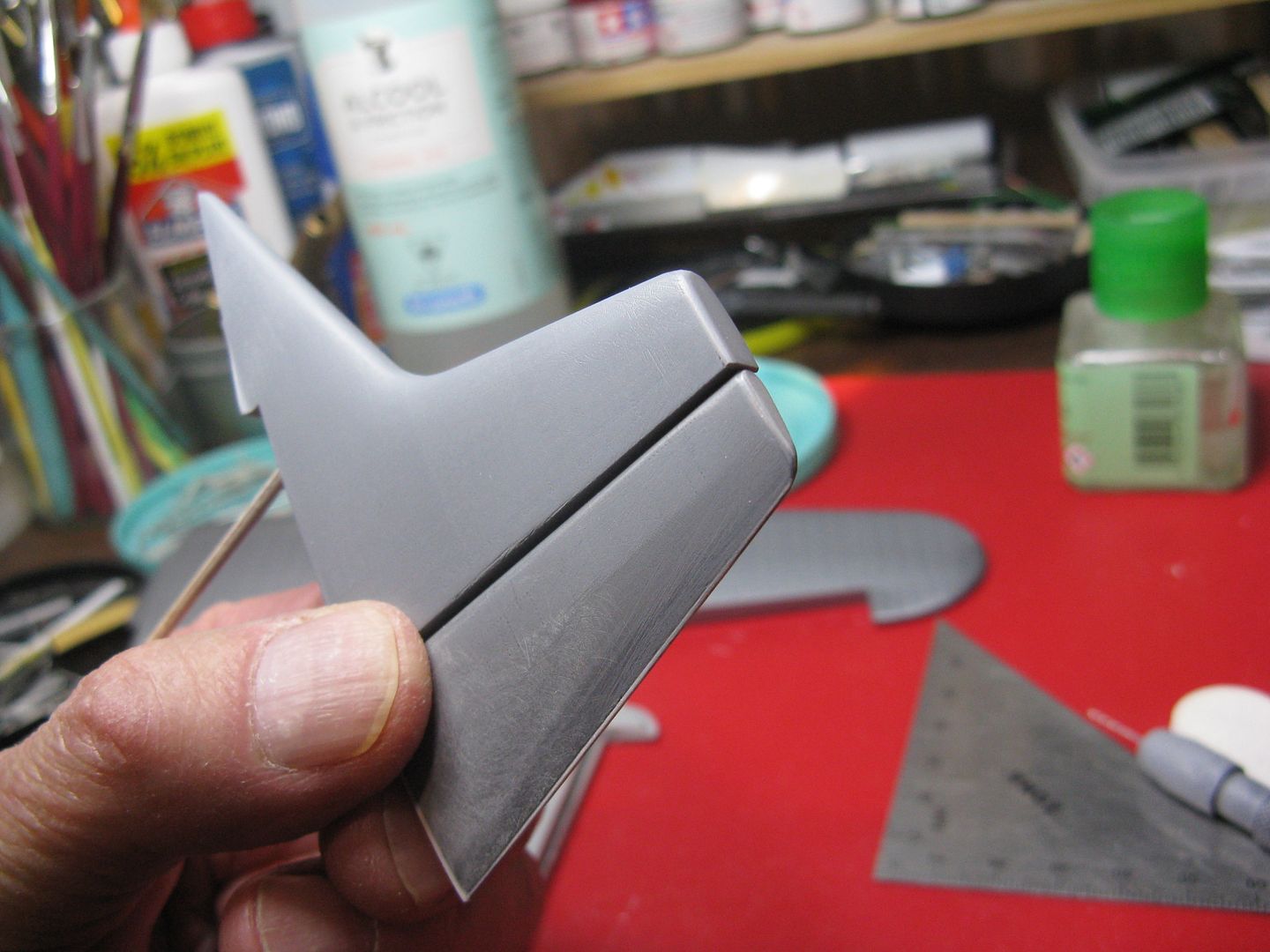
I added hinges...

...Then rescribed the rudder trim tabs and while I was at it made two trim tab actuators from scrap wire. Viola!
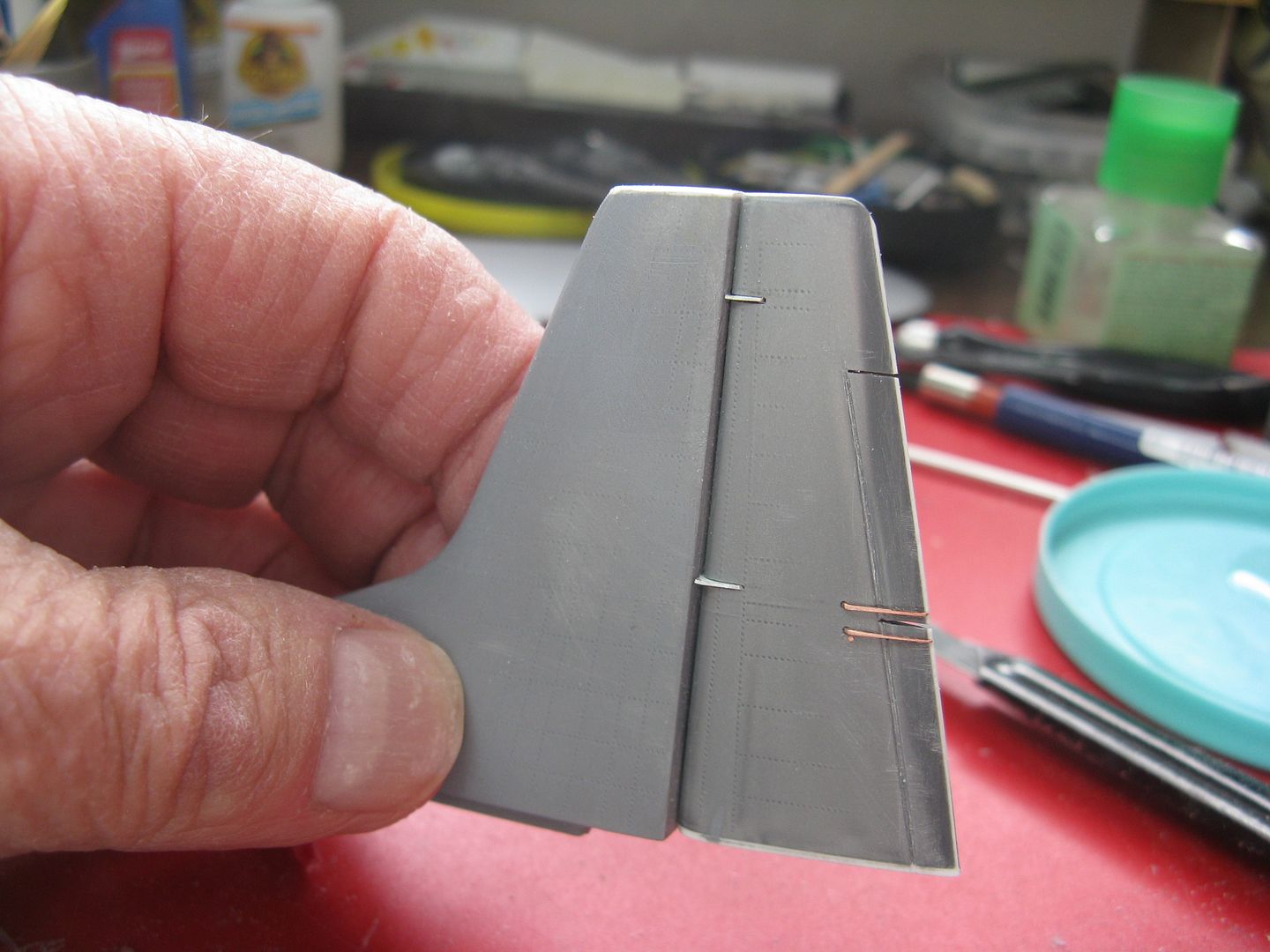
The horizontal tail has received the same treatment, in addition to some work to rectify the tolerances between the fixed and movable portions.
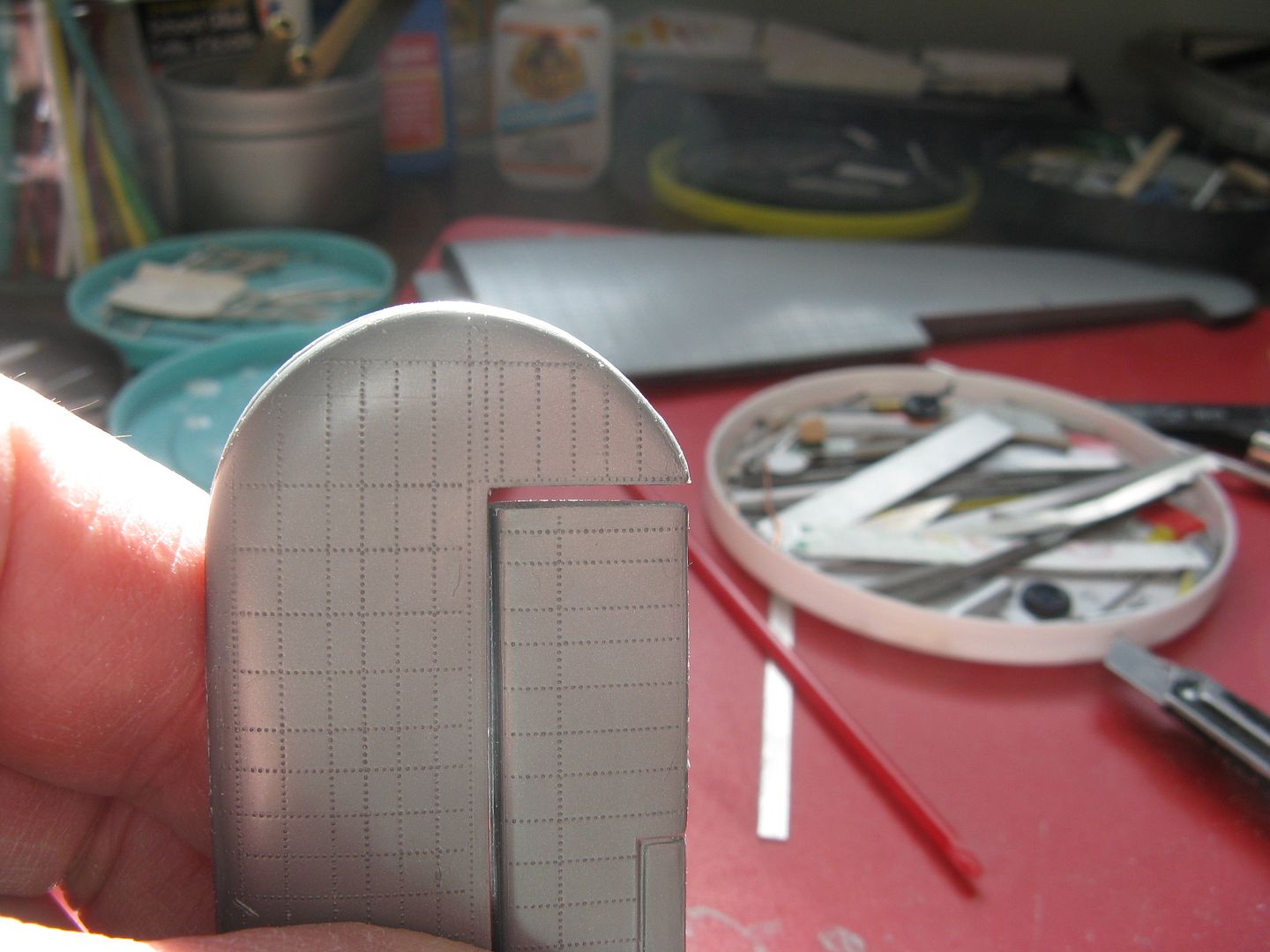
Here's one elevator. The excess rivet detail never fails to amaze. I mean, why use 21,650 rivets when only 21,648 will do?
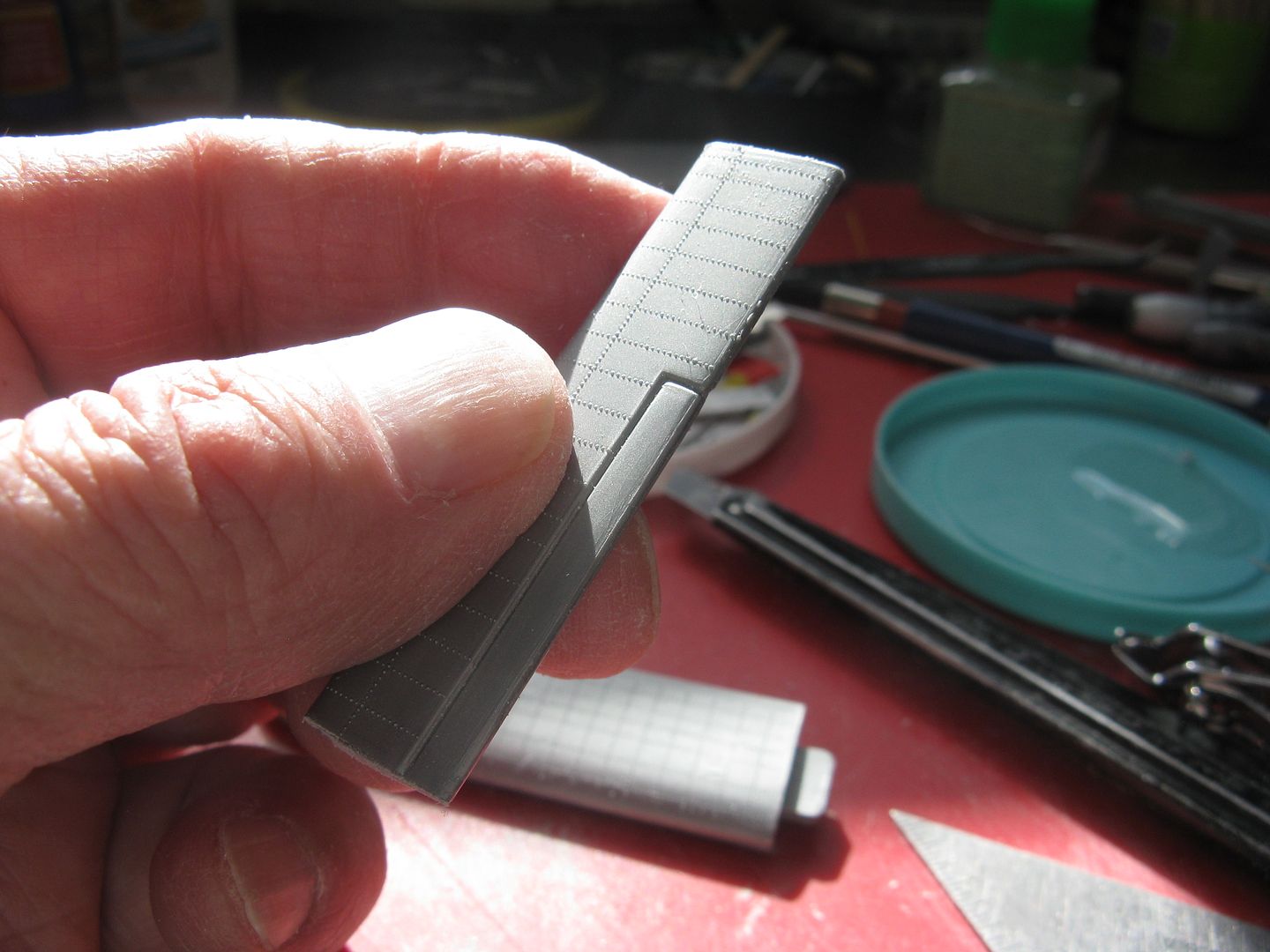
Anyway, adding a shim to the end of the elevator and giving it the rudder treatment worked wonders.

The elevator is upside down in that pic, the trim tab is on the inboard end, but you get the idea. The fit between the stab and the fuselage, by contrast, is very precise.
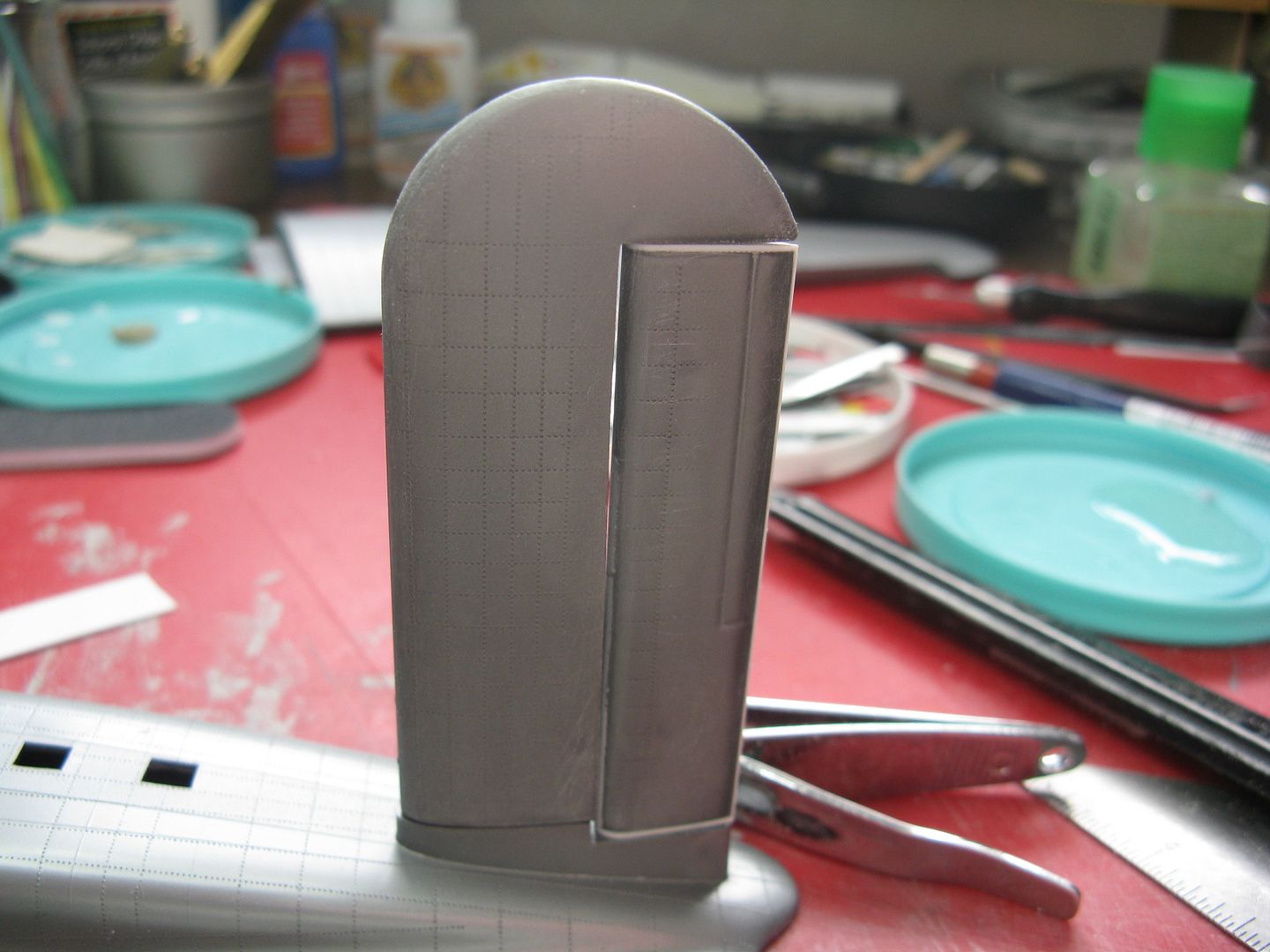
Next up will be the fuselage modification. This means walking the rope without a safety net, since I only have one set of resin doors. Maybe the only set in the world.
A few months ago I had a call from the Yukon Air force. It seems they were missing a Bristol Frightener from the collection. Bob informed me that he remembered having one in the stash, or thought he did. Since we both suffer from CRS disease, I also seemed to remember the kit was the Airfix 1:72 model of the Bristol 170 Mk32 Superfreighter, but that back in the mists of time someone had made a resin conversion kit that converted the Mk32 to either a Mk11, Mk21 or Mk31 Freighter. Bob spent some time fudging about in the darkest recesses of his man cave and lo and behold! he found the kit along with the resin kit in the same box.
The Bristol 170 Freighter was based on the pre-WW2 Bristol Bombay design. It first flew in 1945. The airplane was a conventional - read ugly - fixed gear twin, built to accommodate a British military 3-ton truck driven onboard via a nose trapdoor. The trapdoor was quickly replaced by a set of clamshell doors, and the aircraft began to enjoy modest success as a commercial offering. SABENA, Silver City, and Air France flew them, as well as Northcoast, Norcanair and Wardair in Canada. The Canadian aircraft were all Mk31's, which meant they had squared off vertical tails and rounded tips on the horizontal stabs, as well as improved Bristol Hercules engines of 1700 hp.
Not one to leave well enough alone, one morning after a hefty evening of tea and crumpets - or, one suspects, beer and skittles - the design boffins at Bristol met over breakfast kippers to discuss improvements to the airplane. "I know" said one, "let's make it uglier." There were cries of "Hear! Hear!"
and thus was born the Mk32. The 32 has a taller, rounded vertical fin and a larger nose. Ok, I admit I made up that last part, but it could have happened.
The Airfix kit is ancient. It first came out in the late 1950's I believe. Here's what it looks like:


The model for the YAF will be this one, CF-UME in Northcoast titles, seen here in all her glory.


And finally seen here after she went through the ice on a lake north of Whitehorse one spring, better than 40 years ago. An attempt was made to salvage the aircraft, but she sank before they could save her and she sits on the bottom still.

For the mod I shall use this part of the resin kit.


It looks like a modicum of firkytoodling is in order, so let the cutting begin to commence!
I shall use the kit vertical and horizontal tail surfaces, since the horizontal stab tips on the Mk31 are rounded. The vertical tail is straight across rather than rounded...

...So I began by cutting off the fin at the top of the rudder. and installed a top plate using a scrap of plastic.

The trailing edges of the flight controls are approximately two scale feet thick, so in addition to sanding off all the superfluous rivet detail I sanded the trailing edge of the rudder and then installed a strip of .015 x .030 styrene to make a nice crisp trailing edge.

I added hinges...

...Then rescribed the rudder trim tabs and while I was at it made two trim tab actuators from scrap wire. Viola!

The horizontal tail has received the same treatment, in addition to some work to rectify the tolerances between the fixed and movable portions.

Here's one elevator. The excess rivet detail never fails to amaze. I mean, why use 21,650 rivets when only 21,648 will do?

Anyway, adding a shim to the end of the elevator and giving it the rudder treatment worked wonders.

The elevator is upside down in that pic, the trim tab is on the inboard end, but you get the idea. The fit between the stab and the fuselage, by contrast, is very precise.

Next up will be the fuselage modification. This means walking the rope without a safety net, since I only have one set of resin doors. Maybe the only set in the world.


 ....
.... 





